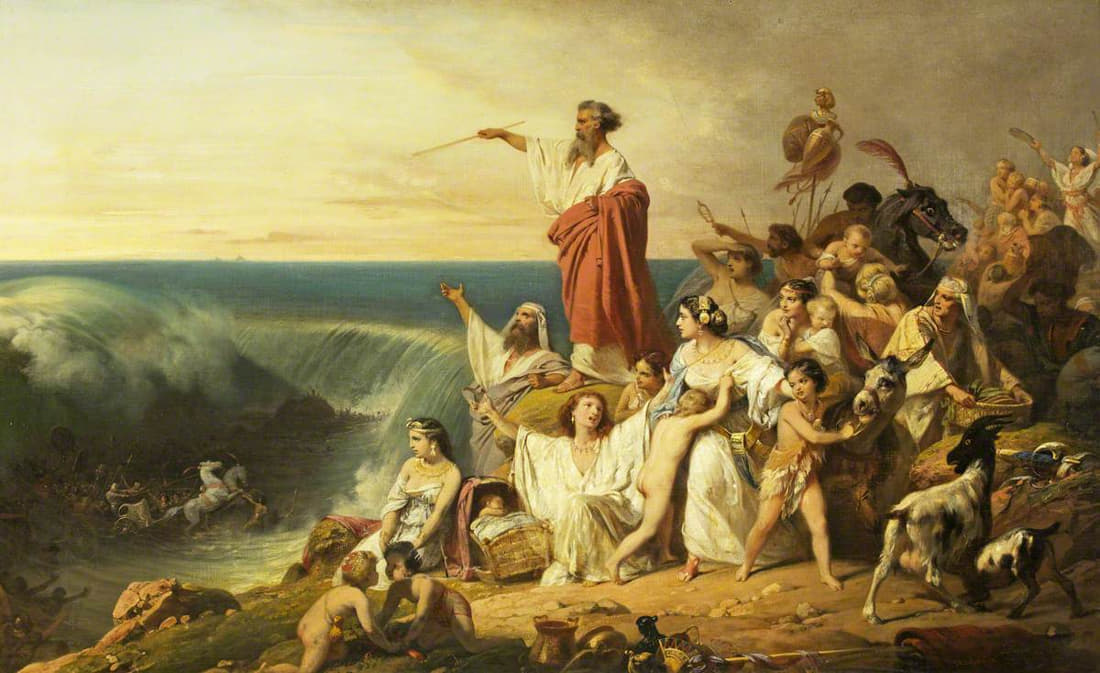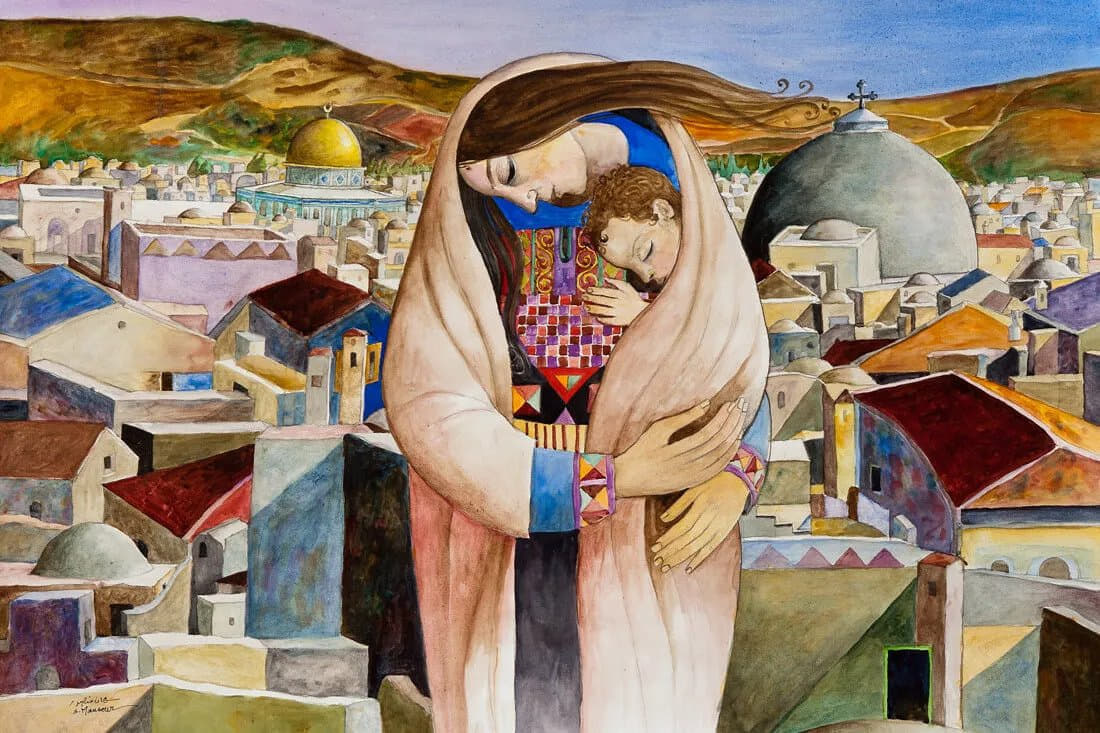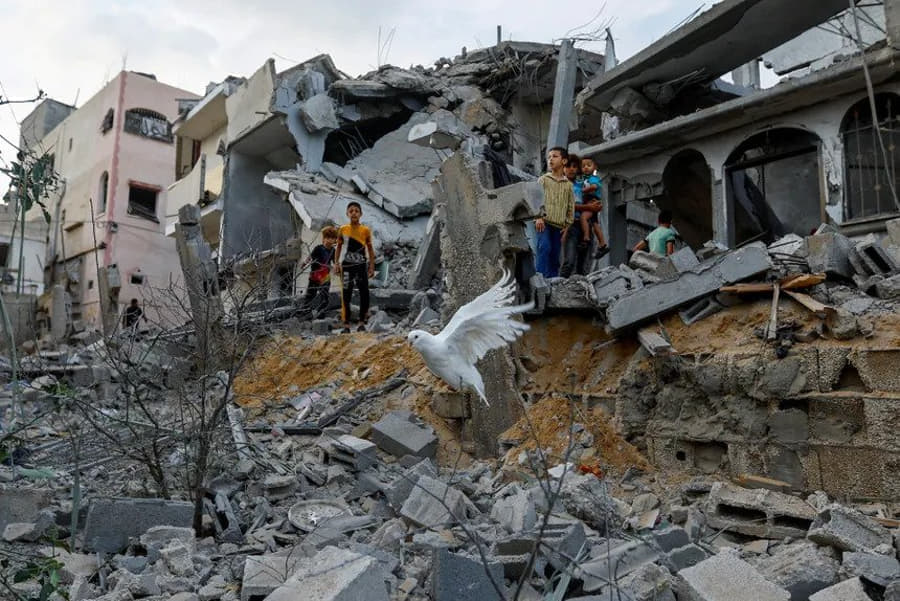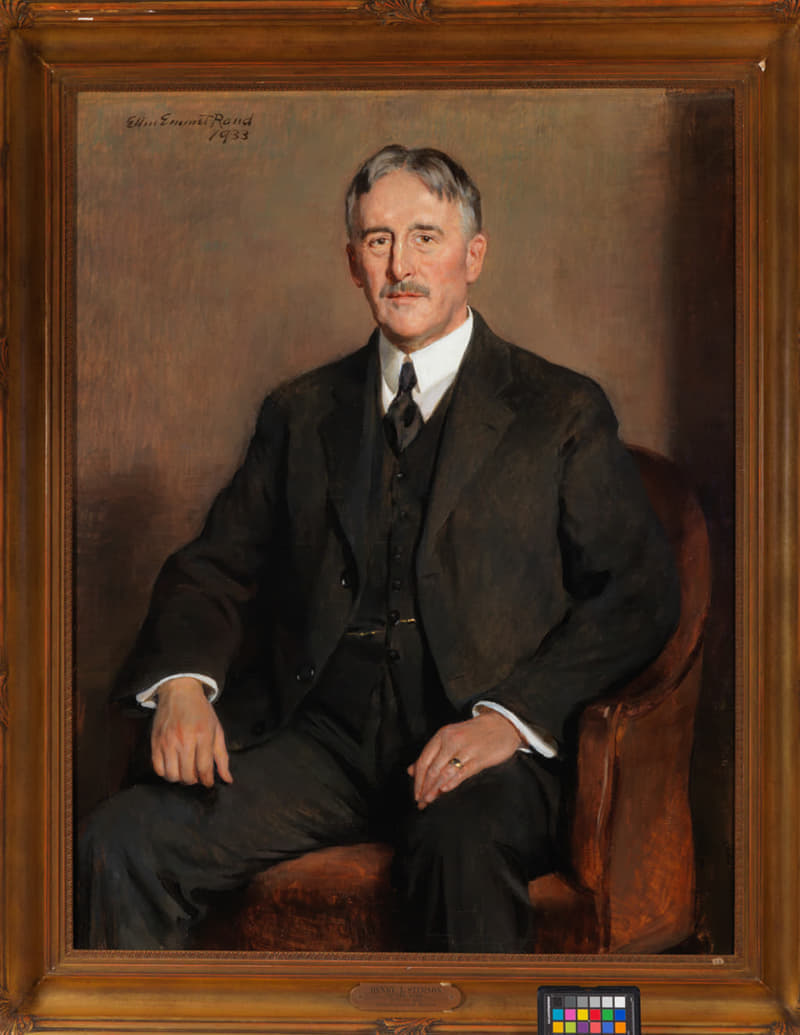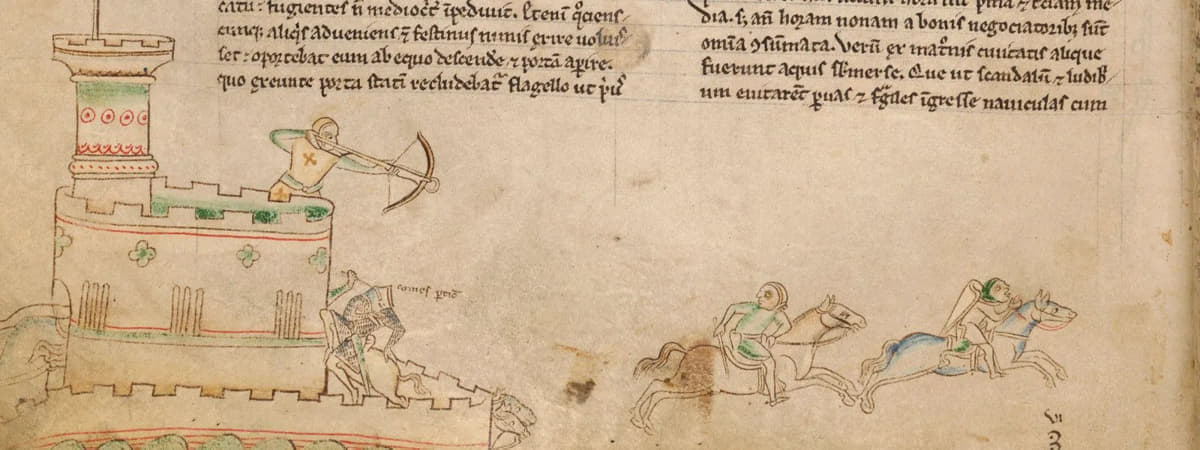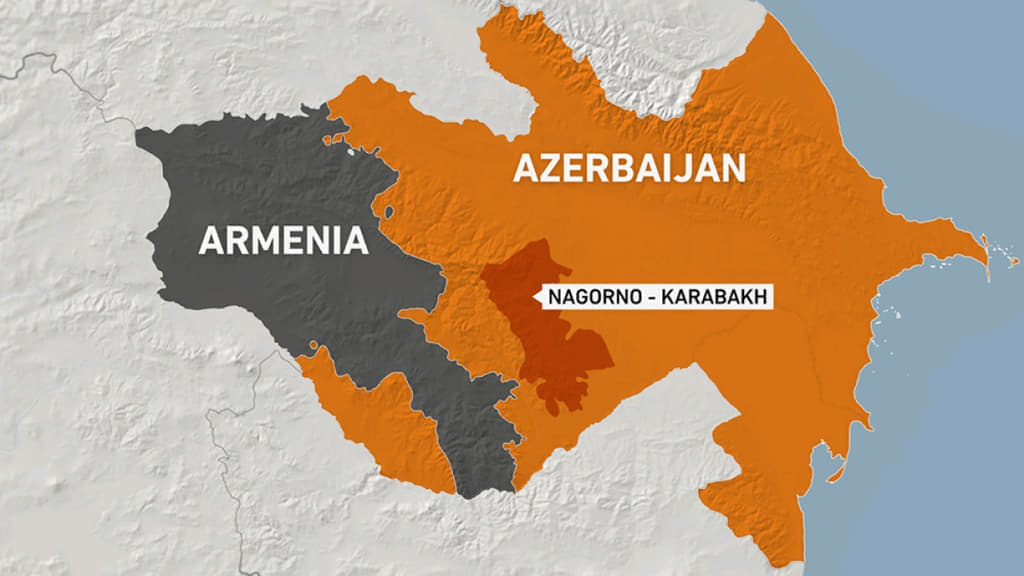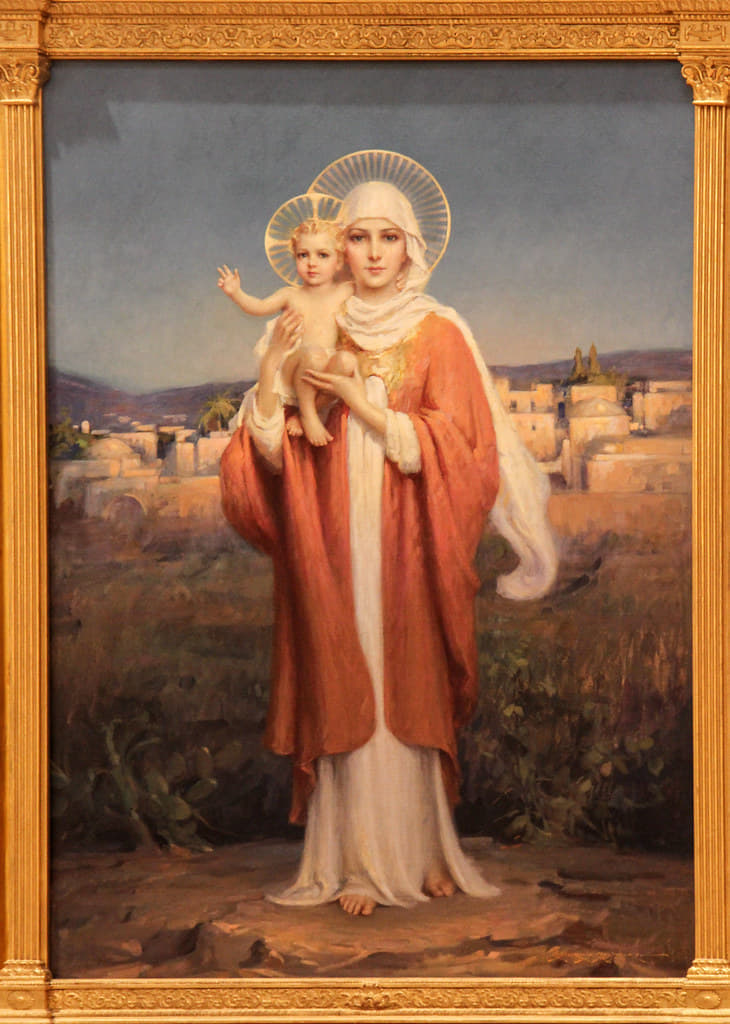Alexander Dugin recently sat down with Pavel Volkov of Ukraina.ru to discuss the current war in the Ukriane and its implications for the future of Russia. We bring you this English translation through the kind courtesy of Geopolitka and Ukraina.ru (Part 1 and Part 2).
Pavel Volkov (PV): Alexander Dugin, against the background of recent events, is a freeze on the Ukrainian front possible?
Alexander G. Dugin (AGD): The Palestinian conflict has seriously changed the situation. All the countries subordinate to the US were at war with us until the last moment, and Ukraine had huge support. We often underestimate it for political and propaganda reasons, but in fact it was so unprecedented that we can say that Russia was at war with NATO. Now there is a new object—the Islamic world. Even if it is a coalition of a few countries, say, Lebanon, Syria, Yemen and Iran—it is already enough to divert a huge part of military attention to another region. And then there is Taiwan. So, Ukraine is absolutely no longer the only front in the struggle of the unipolar Western world against the multipolar world. New front lines are emerging, and the topic of Ukraine is shifting from an exclusive first priority to a secondary one.
The West is loyal, the West will support Ukraine for a long time, but probably not with such enthusiasm. And in this situation, it can offer us some new move, for example, to freeze the conflict in order to carry out rotation, prepare fresh personnel, etc.
PV: On what terms?
AGD: That’s the thing; all the terms of truce that can be offered now will be twenty stories below what we can consider minimally acceptable. They will be humiliating, impossible demands that no one will even consider seriously. What happened with the grain deal? When Moscow realized that its terms could only be twenty levels below the minimum acceptable, it aborted the deal. And with the ceasefire, there will be even tougher demands for various reasons—because of overheated expectations in Ukraine itself, because of the radical demonization of Russians in the West, and because of the overestimation of our weakness. At one point, we did demonstrate weakness by withdrawing from Kiev and retreating from the Kharkov Oblast. After that, the West had the impression that Russia was finished, Russia was weak, Russia was a colossus on clay feet, and now it could be done away with. And then we rebuilt, and it turned out that this was not exactly the case; but expectations remained high.
So, I think that proposals for peace talks may now follow, but even the initial terms will be so unacceptable that Russia, even with great desire, will not be able to accept them for a thousand reasons. Now we are starting the presidential election campaign, and it will obviously be held under the banner of victory; and anything that even remotely resembles victory will be welcomed. And anything that will resemble defeat or betrayal, neither the incumbent nor the future president has the authority to accept. That’s why I’m not too worried about peace talks. That’s the worst thing we go to pieces on; but it turns out it’s not the only thing. We’ve seen enough of other problems during the Special Military Operation.
PV: If not negotiations, the what?
AGD: We are more likely to see a destabilization of the situation in Ukraine itself. Feeling the weakening of support, the Ukrainian elites will flounder, shifting responsibility to each other. Zelensky is now in a very difficult position. He may have canceled the elections rationally. When a country is at war, it is usually ruled by a dictator, a person who, due to historical circumstances, is forced to concentrate all the power in his hands—there is nothing special about that.
But in the West, the constant holding of elections, the constant reproduction of electoral cycles, is in a sense an essential tool. It is necessary to constantly change leaders so that they do not fall into a sense of impunity, and even pro-Western leaders who are too welded to their seats are overthrown by the West. That is why this idea of postponing the elections, which Zelensky seems to have agreed with the West to do, is actually working against him. There are double standards there; they can support canceling the elections and then blame it on Zelensky.
PV: But if for some reason the freeze does happen, what risks will it bring to Russia? After all, Russia is also heated in a certain way.
AGD: It is. The worst thing that can happen in this war is peace, i.e., a truce on the terms of the enemy. The fulfillment of these conditions will not be able to be presented as a victory. Because indeed we have huge casualties—people are losing loved ones, losing children, blood is flowing through the souls of Russians, and just saying that we will freeze the conflict will not be accepted by anyone; it is fraught with the collapse of the country and the system, and it is better not to even think about it.
I think that our authorities soberly realize that it is impossible to freeze the conflict without victory, without bright, tangible, visible positive results. Of course, there will be talk about it; someone who dreams of Russia’s defeat inside and outside Russia will exacerbate this situation; but as far as I imagine the supreme authorities, this is impossible. We will talk about peace when we have victory.
PV: How do we understand that victory has come?
AGD: There can be different ways: victory over the whole of Ukraine or the liberation of only Novorossiya, or even a part of Novorossiya within the four regions that are already part of Russia within their administrative boundaries. But at least the consolidation of the borders of the four new regions can be considered a minimum victory, which will not actually be a victory. In my opinion, this is not even a minimum, but a failure and defeat in the eyes of our society, which has already shed so much blood. Half of Ukraine—with Odessa, Mykolaiv, Kharkov, Dnipropetrovsk, maybe Sumy and Chernihiv—is still a good thing. But no one will even talk to us about four regions; they will offer us even less than what is already unacceptable for us. The distance between what can be the basis for peace talks for Ukraine and the West and for us is too great. Until the positions are brought closer together, until we launch a powerful offensive with a siege of Kiev, it will be impossible to negotiate.
PV: So, the basis for negotiations can only be the direct military seizure of territories?
AGD: Yes, or if the Ukrainian government collapses. On the other hand, we can come to negotiations if everything collapses. But, of course, this is unlikely. In short, the difference between the two minimal sets of peace proposals is now so great that further fighting is inevitable. And with it will come political processes inside Russia and inside Ukraine. Inside Russia, they are predictable—the strengthening of the “Victory Party” and the final liberation from the “Traitors’ Party;” while in Ukraine, in my opinion, we should expect disintegration. When people do not get what they dream of, when the difference between what is proclaimed and what is real becomes completely unacceptable, they look for someone to blame. Someone must answer for the failure of the counter-offensive. It will weaken Ukrainian society, split the elites.
At the beginning of the Special Military Operation, both society and the elites of Ukraine turned out to be quite consolidated by Nazi propaganda, expectation of trips to Europe and, above all, hatred towards us. Russophobia, the feeling of rage, hatred, the desire to kill, to destroy really consolidated the society, but this also has its limits.
The failure of the counteroffensive has shown that Russia is very strong, and this failure is something that Ukrainian elites and Ukrainian society will have to deal with. How they will react, I honestly don’t know. Whether this failure will be enough to hit them hard enough to make them collapse and give up, or whether they will be able to rebuild and continue to resist, I can’t say.
But in any case, our prospects may not be brilliant, but they are not bad, are reliable, connected with the president’s will to lead the country to victory, while the situation in Ukraine will worsen. Zelensky is fed up—first he made us laugh like a clown, then he poured out blood, used all methods of attracting attention, and now he has nothing to impress, surprise and inspire. So, his star is starting to fade; plus the West is distracted on other fronts. In this situation, I think that very, very slowly the initiative will pass to us. Very slowly, because it is difficult to fight against all of NATO, and with such a rabid, hate-pumped puppet as Ukraine. Consider a pack of rabid wolves given long-range missiles. We don’t really know how to respond to this.
PV: The problems may split Ukrainian society, but it will not then love Russia. Are there any non-military tools left to pull Ukraine out from under the external control of the West, or has that train left?
AGD: I don’t think there are any left. That train has left. They were there, but we did not use them. So now there is no solution to this problem other than a military one. Another question is what to do next. If we imagine that we have liberated Ukraine up to Lvov, what will we offer them next? Of course, we have to offer them something. But this is not a question for today. The war will be so complicated and long that we will have time to think about it.
I am absolutely convinced that there is no other way out but Empire and Orthodoxy, a powerful world pole with the preservation of classical culture and classical worldview in contrast to the modern degenerated West, mobilization of the Slavic deep beginning. We need this; it will be quite acceptable for Ukrainians as well. But first we need to break the back of the Western liberal-Nazi political machine. Destroy it. Then we will think what to say to the Ukrainians. Until our boot is on the border with Poland and Hungary, it is useless to talk about economy, ideology—no one will listen to us. Only after a crushing military victory will they take what we say seriously.
So far, we have often squandered the threat potential. It is fine when experts say this, but when our major military and political figures say: “Don’t do this, or you will be badly off,” and then the “badly off” does not come, they significantly lower the value of Russia’s words and declarations. In this situation, until we answer for our words with deeds, until we fully defeat Ukraine on the battlefield, it seems to me that in the current situation, it is simply irresponsible to talk about any other leverage. No one will listen to us. Economics does not play a role—they blow up gas pipelines, which take dozens of years and billions of dollars to build. Frankly speaking, the economy, except for the military economy, does not matter now. And the military economy means a sufficient number of high-quality weapons and good uniforms for soldiers. That’s the only thing that matters.
PV: But the economy is also a standard of living. This is, among other things, what attracts Ukrainians to Europe. It is not so unimportant that in the same new regions there is development, people have a place to live, they study, they have high-tech and high-paying jobs. That would be interesting for them.
AGD: No, it would not be interesting for them. First of all, no one will show it to them. Secondly, if Ukraine had fought for comfort, it would have kept itself together with Crimea; and being a bit more subtle and flexible in its policy towards Russia, would have gotten European comfort and the country would be in a generally good position. No, the Ukrainians sacrificed all of this for one thing: to kill a Russian. The rage of their Russophobia supersedes any considerations of “looking to get comfortable” and “who gets paid how much.”
I do not believe that we are dealing with material motivation of our enemy at all. Our adversary is demon-possessed. You can’t do that with a demon. The demon is sent to destroy, to kill, to die. He will not think where it is more profitable for him—with the Russians, in the new territories to live, or in the West. His consciousness lives completely separate from his body. And in this struggle with the Ukrainian demoness, no arguments about the fact that the new territories are better, cities are being built, will not work at all—firstly, they will not be shown, and secondly, they will not believe.
As long as a person is possessed by a demon, what do you say to him? What to explain, for example, to a drunken person? Don’t walk on the highway—you’ll get run over? But he goes there because his legs are moving. He can’t think, he can’t hear anything. And demon possession is even worse. It deprives one of all critical thinking; he can evaluate nothing, see nothing, believe nothing. The possessed live in an absolutely illusory world, where the material factor itself turns into some demonic aspiration. We say to them—here is comfort, here is convenience, here is prosperity; and they say—no, you are lying to us, the material factor is when a Russian is killed, a Moskal should have his eyes gouged out, burn him, then it will be a material factor. Somewhere out there in Mariupol, houses are being built and former citizens of Ukraine are living happily in them—no one will believe it. Even if they see it, they won’t believe it. Until we break the neck of the military-political machine, nothing will change; no one will listen to any arguments.
PV: What about the people in the new territories and the several million refugees who came to Russia? They have lived in Ukraine for a long time, and after Maidan, they were subjected to corresponding treatment. They are complex, and there must be some special way of dealing with them?
AGD: They’re complicated, but easier than the ones on the other side. Of course, they need an approach to them, but right now, admittedly, I don’t have time for them. Russia’s existence is in question. Of course, I realize that it is important, but if there is no Russia, there will be neither these people nor other people, no people at all. We in the capital live in a kind of frozen state, while in reality there is a bloody battle for history going on at the front—in Zaporozhye, in Kherson, in the Donbass. We walk the streets, ride scooters, and below us all the ground under the asphalt is soaked with the blood and pain of those people who are fighting for us.
People who have recently found themselves inside Russia at least understand what all this is for. It is they who have to explain to us what is happening. We can’t tell them anything, because Russia, in general, is also to blame for allowing all this to happen. When Ukraine started behaving in an absolutely Russophobic manner, why didn’t they stop it when they could have? We have made so many mistakes in relation to Ukraine over the last 30 years that we are partly to blame.
And the people who live in the new territories have seen everything for themselves; they made their own choice; they are our teachers; they are much more awakened. This is the war in which they were the first to wake up and awaken Russia. We must treat them with utmost care and love, but it is they who must lead us forward to Lvov. I think it is not they who need our support, but we need theirs. The people of the new territories are our vanguard, showing us the way. As for our social obligations to them, I think we are fulfilling them. If not well, we fulfill them; even worse, before our elderly population. We are now in a situation where we are overcoming the nightmare into which our country collapsed in the late 1980s. It is a shared tragedy. We must restore the unity of our Empire—it is simply a historical duty and for this we can and must pay any price at all. There will be no Empire—there will be no Russia. There will be no us. There will be not only no future, but even no past.
If we defeat the West in Ukraine, then we confirm by deeds that we are the pole of a sovereign civilization, the pole of a multipolar world; we shall preserve our present, our future and our past. If not, we are finished. We will be erased from history.
PV: Alexander Gelievich, you represent one of the popular philosophical and political movements in Russia. It is interesting how you and your supporters see the future of Russia.
AGD: Everything starts with geopolitics. To be an empire, as Brzezinski said, Russia must establish control over Ukraine. Geopolitics is linked to ideology—the more we realize ourselves as a sovereign Russian civilization, Russian world, Russian Empire, the more we will turn to our roots, our attitudes, which we abandoned especially 100 years ago, with the Bolsheviks firstly, and then again in the 1990s. We actually betrayed ourselves completely in 100 years, first by abandoning religion, Orthodoxy, the Tsar, and then by abandoning social justice and defending a very special Soviet civilization. We have betrayed ourselves twice in 100 years and it does not go in vain. We betrayed the Empire, we betrayed the Russian world, we betrayed our identity and now it is necessary to restore it.
PV: Perhaps Brzezinski is not exactly the kind of thinker on whose ideas Russian society should rely. What does empire mean to you? What is the configuration of power, property, social structure? What is it all about?
AGD: The empire, which we will build as Ukraine is liberated, should have a completely independent ideological, political, social structure, which will be based on the continuity of different stages of Russian history. There will be elements of Orthodoxy and supreme autocratic power, and social justice—in the Soviet period this was the main requirement of our Russian people and other peoples of Russia. At the same time, of course, atheism, materialism, the completely plebeian, petty and disgusting idea of material progress we must discard, returning to the ideals of the Church, Orthodoxy, to the ideals and high aspirations, to the principle of aristocracy of the spirit—these are all things that have been lost over the last 100 years that we must restore as we win on the Ukrainian front.
PV: It seems to me to be some kind of eclecticism—both autocracy and social justice at the same time. And who owns the property? After all, social justice depends directly on how to distribute what we have.
AGD: Only materialists have in their minds the question of distribution of property. Property is important. But in fact, there are many other options besides total material equality (communism) and bourgeois inequality. If we are talking about a socially oriented solidarity society, the gap between rich and poor should not exceed some normal limits. In a solidarity society there must be mutual aid. The principle of autocracy in no way contradicts the principle of social justice.
PV: Well, communism is not about full material equality, but about the absence of exploitation. Did I understand correctly that in the solidarity society of the empire of the future, the rich and the poor will remain, i.e., there will be capitalism, but with a “human face”—with a more equitable distribution?
AGD: No, capitalism is the Anglo-America, Western model that destroys everything. Capitalism is not just a society with a market, but a market society, where everything is sold, where everything is bought, where there is only one class—the bourgeoisie. Capitalism is the essence of what we are fighting. No capitalism! There can be no capitalism in a full-fledged holy empire. It’s a completely different system. But why should we speak in terms of Western political models only? Socialism, capitalism—all these are borrowings from Western culture, which is alien to us. We need to build a Russian society and we will have Russian property. This is the way Russian people have traditionally understood property.
PV: In different eras, Russian people have understood property in different ways. What do you mean?
AGD: Read the Eurasianist jurist Nikolai Alekseev’s The Russian People and the State. It’s a wonderful book. He said that the most correct approach is the idea of relative private property. Relative private property is roughly what was understood in the Soviet Union as personal property. It is at our disposal, but we cannot do whatever we want with it. For example, a dog is in our possession, but we cannot kill it because that would be immoral to society and heartless to the dog itself. It would be a crime. It is the same with all that is entrusted to us. We should treat land, houses, means of transportation, and other things with social and moral consideration. That’s beautiful!
PV: It is immoral to kill a serf, too; Saltychikha was punished for it at one time, but he is still a serf. But that’s not even the main question. On what principle will we be entrusted with something? Someone will be entrusted with an oil rig, and someone will be entrusted with a khrushchevka apartment in a dormitory district of a provincial town, right?
AGD: No. I am absolutely convinced that the people’s wealth—oil, gas, natural resources—all should belong to the state. Exclusively to the state, because they cannot be the object of private property; no matter how much people help to extract them. The subsoil belongs to the state, to all the people. Therefore, every citizen of this beautiful Empire of the Russian future has the right to some share in the nation’s wealth. Another thing, each of course will need to provide a minimum—a minimum of housing, a minimum of land. This will be the task of a strong autocratic power, because it is a support.
People living in their homes on their land will give birth to Russian children, and they will be loyal and grateful; they will be real carriers; they will be brought up in the right way. We need to change everything. When we apply to the future Empire the principles of what we had in the 20th century, or what we see in the West, these are absolutely false examples. It is necessary to build a completely new society. And this new society is the society of the future Empire, which will have to break with the West, with its ideas about capitalism, socialism, equality and inequality.
PV: No socialism, no capitalism, no equality, no inequality—it’s hard to see how you can walk somewhere in the middle.
AGD: Everything has to be different. Everything has to be solidarity, has to be spiritual, has to be very highly developed, highly educated, highly organized. And we are capable of that. These are our ideas, our dreams. And in the 19th and even in the 20th century, the goal of our ancestors was to build precisely such a just society. And when we gave it some concrete form according to Western models—one or the other—we just came to contradictions. There should be a very open development.
Everything will be resolved as we win in Ukraine. We will not be able to move beyond where we stand if we don’t do a renewal and revitalization of the system in Russia itself. And so, as we strengthen ourselves, as we reclaim our own identity, we will win victory after victory. Each victory on the front will actually mean a victory within the system and the establishment in our society of the correct laws and proportions that have been monstrously broken throughout the last hundred years of history—in the seventy-year Soviet cycle and especially the last thirty years of liberal de facto external governance of the country.
PV: If the correct laws and proportions, as you say, were destroyed exactly 100 years ago, then they were correct at the beginning of the 20th century? That’s the society you think was good? But it was capitalism with feudal vestiges.
AGD: No. There were a lot of falsehoods then also. What people dreamed of in the 19th and 20th centuries should be realized in the 21st century. All those concrete forms of realization that these dreams took require a very serious critical analysis. But the most important thing is why we reject the last hundred years, because then the Church was rejected, sacredness was rejected. We followed the Western path of materialism, atheism and then for the last thirty years—capitalism. Before that, socialism. We got carried away by the materialistic, atheistic ideas of the West, and so we destroyed everything. We have destroyed our society, we have destroyed our spirituality, we have destroyed our families, we have destroyed our culture.
We are being danced around by some crazy women like Pugacheva (they were dancing until the last moment), scaring us with their senseless hysterical shrieking. Then, at a critical moment for the country, the monster was in Israel, mocking the country, choking on Russophobia. And when even there it is required to show some tact and courage with regard to the new homeland (apparently, not so new, since that’s where it escaped to), it runs away from there again. This is the kind of ugliness that the last hundred years of our history have produced. Disgusting scum of the human race have come as models in our culture. Similar figures in politics, economics, and so on. Now we have to get out of it.
PV: Are such characters only a product of the era you mentioned? What about all those heroes of the Great Patriotic War and not only, whom that era gave us? And in the 19th century and earlier, were all patriots and not a single traitor?
AGD: I am not saying that we should go backwards. We need to move forward and realize the dreams of Russian people, Russian patriots who fought for Russia, who saw its shortcomings, but who dreamed of a better Russia, of the Russia of the future. These are their dreams that we must realize. Not just to restore what was. If everything had been perfect in the 19th century, there would have been no revolution. And the people who made revolutions, perhaps many of them were also driven by good thoughts. These good thoughts, these bright dreams, love for Russia, loyalty to God, understanding of our culture, our identity, its defense, the will for justice—these ideals, these traditional values should be embodied now in the Russia that we will build. So here, yes, monarchy and Orthodoxy are principles. They are beautiful.
We have had autocracy throughout our history. And for the last hundred years it has also been monarchy, only it was not called that. Autocracy is the most important principle of organizing such large territories. The principle of Empire, the principle of Orthodoxy and the spirit, the superiority of the spirit over matter—this is the orientation of our entire society. If it doesn’t happen, there’s no point. We are not of this world. Our Empire is not of this world. Or rather, partly of this world, and partly not. And this spiritual dimension, this vertical, is the main thing to convey. It is necessary to realize the dream of our ancestors the 19th century, the 20th century—but without religion, without faith, without Church, without God, without Christ—any, even the most perfect, society will be worthless.
PV: But you can’t make people believe in God if they don’t.
AGD: You know, when the Special Military Operation started, many people, especially volunteers, went there with the red flag, some with the imperial flag. But now, more and more of us are gradually seeing the Savior of the Uncircumcised—the banner with Christ is the most common among the volunteer units. Christ Himself will come if we turn to Him. He will come to us. If people realize their love for the Motherland and begin to simply leaf through our history page by page, they will see the importance of the Church. There is no need to force anyone. There should be no compulsion here. I am absolutely convinced that every Russian person is deeply Orthodox. Many people just don’t realize it. There is no need to force, no need to impose anything on anyone. You just have to tell them.
When people are tortured for 70 years with atheistic propaganda, beating out of them ideas about the spirit, about religion, about the soul, about eternity, about heaven, about the resurrection of the dead, who can stand it. What will happen if you are put in a cell for 70 years, tortured, false views implanted into your consciousness, and then for 30 years even worse—they say, take care only of yourself; there is no justice, no country, only you, while you live; and then you turn into a machine and upload your stinking dreams and episodes of your idiotic life to a cloud server. That’s how you’ll be preserved if you don’t steal enough money to freeze you and then unfreeze you someday.
These infernal, satanic ideas about life that our man has been indoctrinated with, they get knocked out on the fronts. They are dislodged when a man thinks about what it is to be Russian. To him comes this banner with the Savior of the Uncircumcised, and who will bring it? We will. Priests will bring it. Russian people will bring it. The state will bring this banner with the Savior. One should look at it and everything will become clear by itself.
And of course we will help people to return to themselves, and not force them to swear an oath to a new ideology. We don’t need to invent any new ideologies. We need to return to ourselves, because the return to God is not a return to the past, it is a return to the eternal. There is the eternal. The West has decided to build its civilization of the last centuries on the fact that there is no eternal, that there is only time. This is a false idea; the devil speaks through their mouths. This is the devil we are fighting against today, every day in Avdiivka, in Kherson, near Bakhmut. This is a real devil, because he believes that there is no eternity. And we are soldiers of eternity.
Featured: The Baptism of Russia, by Mikhail Shankov; painted in 2003.
